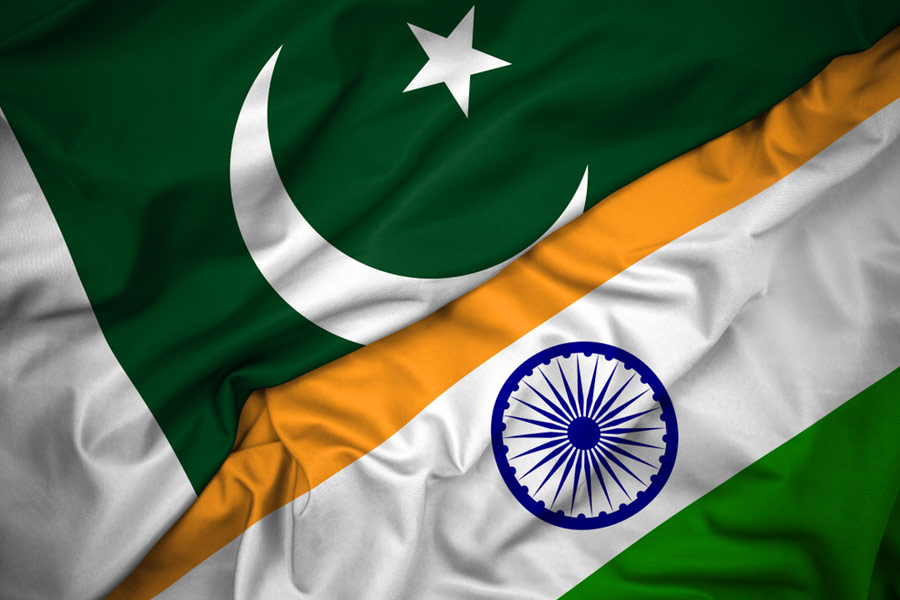

Pics: Jayanta Basu
From a distance, Banishanta looks like a tiny island rising prettily from the waters of the Pashur river, near Mongla Port on the southwest coast of Bangladesh. Onlookers from passing boats point it out to others, not for its beauty but its lure and seduction.
Banishanta is inhabited mostly by women. Some wait in the doorways of their mud-and-bamboo huts. The island is a brothel, and a legal one.
In pockets of Bangladesh, prostitution is legal. The sailors who arrive at Mongla Port need entertainment and the women in Banishanta are licenced by the State to provide it. Many all-male picnic parties also arrive in taxi-boats from Khulna or Jessore as customers.
It has been like that for decades, from the time the port was built in 1950. Or perhaps from even earlier, from the colonial days, when the area was a hub of riverine trade. Women, who had no other choice, would wash up on the island in search of a livelihood. But now they stand exposed to the elements, like never before.
Most of these women are from areas such as Satkhira, Jessore, Khulna and even Dhaka. Many of them were sold to the brothel for anything between 8,000 and 20,000 takas by relatives or acquaintances, tricked with the promise of marriage or work. The very young girls, 13 or 14, we are told, are often injected with hormones for a bigger, fuller look. All of them have to get an affidavit done every year in which they declare themselves as practicing " patitavritti" without having been forced into it or influenced by anyone. "Patitavritti" is an old Bengali word for prostitution, its literal meaning - "the profession of the fallen women".
The word " patita", the fallen woman, is anachronistic and ridiculous, coming with a judgement that defines women in prostitution as belonging to a lower moral grade than others. But even if it wasn't so, it would have been inappropriate, as no woman here seems to have exercised a choice to come here.
Most of them were either lured here or sold for just a few thousand takas. "I don't want to talk about my story," says Razia, a proud, attractive woman who heads the Nari Jagarani Sangha, the organisation for women in prostitution in Banishanta.
When the women are considered "fallen", an island becomes the perfect geographical idea to contain them. The men can come and go back to the sanitised world leaving the moral contagion behind in the island, cut off by the waters from the mainland.
In that sense, every brothel, even in the heart of a city, is an island, cut off from larger society.
The displacement remains continuous. A woman in prostitution, even if she is licenced, has no locus standi, in more than one sense. Her life often keeps her moving; the place of her residence keeps shifting too.
In Banishanta, however, this later displacement has assumed the most extreme form. The waters of the river Pashur that encircle it are rising alarmingly.
Once a bustling place, Banishanta, is losing bits of its land to the river. The tidal data from three neighbouring stations - Mongla Port, Hiron Point and Khulna - show that the average sea level rise in the region is in the range of 6-8 millimetre per year, with the water level during high tide rising even more rapidly.
In the Fifties, 1,200 women lived here. The number has now dwindled to 100. "We have 86 women registered with us," says Razia. She strongly denies reports about minor girls employed in the Banishanta huts, though many others confirm what may have become a trend.

Residents say the frontal erosion of Banishanta has taken away close to 100 metres of buffer land that once the huts enjoyed. The land behind has been converted into a shrimp culture farm - an outcome of sea water moving into arable land, rendering them uncultivable. Within the island too, the women move constantly, from hut to hut, depending on how the water is snaking in.
"The women living in the 50-odd hutments often take it upon themselves to strengthen the embankment, but don't know how long that can save us," says a young woman.
Ownership of homes, too, is complex here; huts are either inherited or rented out. The women either live alone, or with partners. Children play about. No one attends school, as there is none. There was one run by an NGO, but it closed down.
The number of women began to grow fewer when business at Mongla Port nosedived in the Nineties for two reasons: labour unrest and high sedimentation in the river. Then high-intensity storms and the rising river took over.
A series of cyclones and floods battered the island. Many died; many others fled. "Those with nowhere to go are staying put," says a 60-something woman who had come here as a 20-year-old.
"We have all kinds of problems, from atrocities of clients and landladies to the police, who come every evening from Dakop police station and demand 'protection money', to various diseases. But none is bigger than the threat of the rising water level," says another woman. According to her, the nights are particularly worrying. She adds, even when they are with their clients they keep an eye on the approaching river, especially during peak monsoon.
Does a licence make any difference? Not really. The women do not care what they are called. "We all write the same thing - patitavritti," says one, "we don't know what it is."
Even so, an onlooker recites a line from a Bengali poem, about someone's fantasy - Oh! to be shipwrecked near Banishanta.










